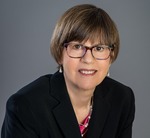Teens’ Message to Parents: Ask the Question
Seattle Children’s public service announcement urges parents to have that cringy conversation about mental health and suicide with their kids. It’s what kids want.
// By Jane Weber Brubaker //
 Riley Anderson is a high-achieving, happy kid at the beginning of Pixar’s Inside Out 2. Then puberty strikes.
Riley Anderson is a high-achieving, happy kid at the beginning of Pixar’s Inside Out 2. Then puberty strikes.
Riley is now 13, and the main characters representing her emotions — Joy, Sadness, Anger, Fear, and Disgust are joined by new emotions — Anxiety, Envy, Ennui, and Embarrassment.
Anxiety in particular sets Riley spinning as she tries harder and harder to make her mark as an aspiring high school hockey player. The emotion pushes her right to the edge, as an inner voice keeps whispering, “You are not enough.”
The animated film gets at some hard truths about the vulnerability of this age group. Suicide is the number-two cause of death among teens aged 10 to 14, according to the CDC.
Yet parents are mostly mum when it comes to talking with their kids about mental health and suicide. One reason is they are often unaware that their kids think about death and suicide. They couldn’t be more wrong.
In a 2019 study, 5,000 adolescents were asked whether they had thoughts of suicide or dying, and their parents were asked if their kids had these ideas. The results showed a wide split. According to Harvard Health, “Half of the parents of the adolescents who thought of killing themselves were unaware — as were three-quarters of the parents of adolescents who thought often about death.”

Candi Nicholson, Seattle Children’s director of Brand and Creative Services
Findings like these spurred Seattle Children’s to action, with the goal of closing the communication gap. Earlier this year, the health system released a public service announcement that has received wide attention across the “WAMIO” region – Washington, Alaska, Montana, Idaho, and Oregon. The spot prompts parents to broach the subject. “What we hear on the street is, ‘I had the conversation,’” says Candi Nicholson, Seattle Children’s director of Brand and Creative Services.
Read on to find out how a small request from the mental health team to promote 988, the suicide prevention hotline, became something much bigger and more powerful.

